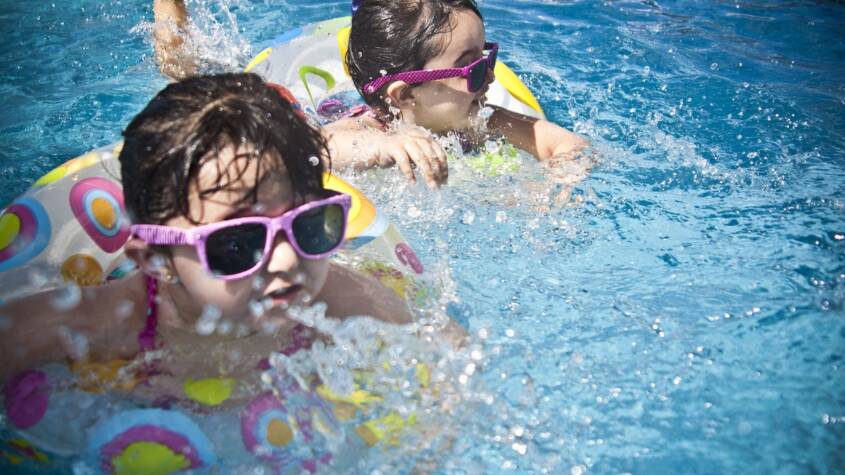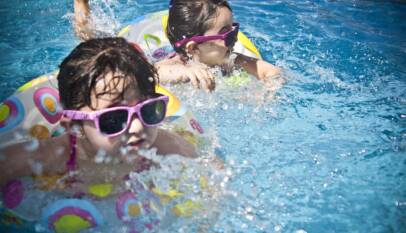Swim Classes for Adults: Enhance Your Skills and Build Confidence in the Water
Learning to swim as an adult can be a transformative experience, offering both safety and enjoyment. Many individuals feel hesitant about joining swim classes due to a lack of confidence or past negative experiences in the water. Participating in swim classes specifically designed for adults not only builds essential skills but also fosters a supportive environment for personal growth.
Swim Classes for Adults cater to various skill levels, from beginners who are apprehensive about water to more advanced swimmers looking to refine their techniques. Instructors are trained to address the unique needs of adult learners, creating tailored lesson plans that emphasize comfort and skill progression. This approach enables participants to gain confidence while mastering essential swimming techniques.
Additionally, adult swim classes provide a social opportunity, allowing individuals to connect with others who share similar goals. Building a community around a shared pursuit can boost motivation and help establish lasting friendships. The benefits of joining a swim class extend beyond just learning to swim; it’s an investment in health, safety, and social engagement.
Benefits of Swimming for Adult Learners
Swimming offers numerous advantages for adult learners, enhancing their physical health, mental well-being, and social networks. Engaging in swim classes not only helps individuals improve their swimming skills but also promotes a holistic lifestyle.
Physical Health Advantages
Swimming is an excellent full-body workout. It engages multiple muscle groups and improves cardiovascular health. Regular swimming can enhance aerobic capacity and increase endurance.
Additionally, swimming is low-impact. It puts less strain on joints compared to other forms of exercise. This makes it ideal for individuals with arthritis or those recovering from injuries.
Moreover, swimming can aid in weight management. By burning significant calories, it supports overall fitness goals. Participants may also notice improved flexibility and muscle tone as they progress through their swim classes.
Mental Well-being Enhancement
Swimming serves as a powerful stress reliever. The rhythmic nature of swimming can promote relaxation and reduce anxiety levels. Many find that spending time in water has calming effects, enhancing mood.
Physical activity, including swimming, releases endorphins. These hormones contribute to a sense of well-being. Over time, frequent swimmers report increased self-esteem and improved mental clarity.
Further, swimming can help combat feelings of depression. Engaging in regular classes provides a sense of achievement and boosts confidence in abilities. Focusing on technique and improvement encourages mindfulness and presence.
Social Interaction Opportunities
Swim classes create a chance for social interaction. Adult learners often share experiences and challenges, fostering camaraderie. This supportive environment can lead to lasting friendships.
Group classes also encourage accountability. Classmates motivate each other to practice and improve, promoting a sense of community. Shared goals help build bonds beyond the pool.
Lastly, engaging with diverse individuals enriches the learning experience. Different backgrounds and ages provide unique perspectives. This interaction helps create a welcoming atmosphere for all participants.
Choosing the Right Swim Class
Selecting an appropriate swim class involves evaluating one’s skill level, understanding the types of available programs, and considering necessary gear and facility amenities. These factors collectively contribute to a more fulfilling and effective learning experience.
Assessment of Skill Level
Assessing skill level is crucial for finding the right swim class. Many programs categorize swimmers as beginners, intermediates, or advanced.
- Beginners: Typically have little to no swimming experience. They focus on basic techniques and water safety.
- Intermediates: Have some familiarity with swimming strokes but need refinement and endurance work.
- Advanced: Are proficient in various strokes and may seek competitive training or specialized techniques.
Potential swimmers can often take an assessment test offered by many facilities to determine their level accurately.
Types of Swim Programs
Swim programs vary widely, catering to different needs and goals. Key types include:
- Group Classes: These classes foster socialization and motivation. They often offer a structured approach to learning.
- Private Lessons: Provide individualized instruction catering to personal goals and pacing. They can be ideal for focused learning.
- Specialized Programs: Some classes focus on specific skills, such as endurance training, open water swimming, or competitive techniques.
Researching local options can help individuals choose a program that aligns with their preferences and objectives.
Considerations for Swim Gear and Facilities
Appropriate swim gear can enhance the learning experience. Essential items include:
- Swimsuit: A comfortable, well-fitting swimsuit is necessary for ease of movement.
- Goggles: A good pair of goggles protects the eyes and enhances visibility underwater.
- Swim Cap: Useful for keeping hair dry and out of the face.
Additionally, swimmers should evaluate the facilities’ quality. Cleanliness, water temperature, and lane availability are critical factors in ensuring a pleasant swimming environment. Checking reviews and touring the facility can provide valuable insights before enrollment.
British Virgin Islands Company Registry Explained: Key Facts and Procedures
The British Virgin Islands company registry is a centralized system that maintains detaile…














